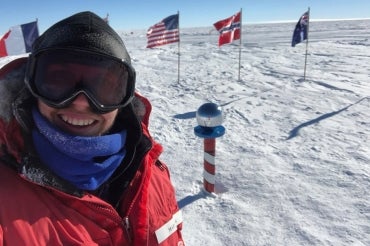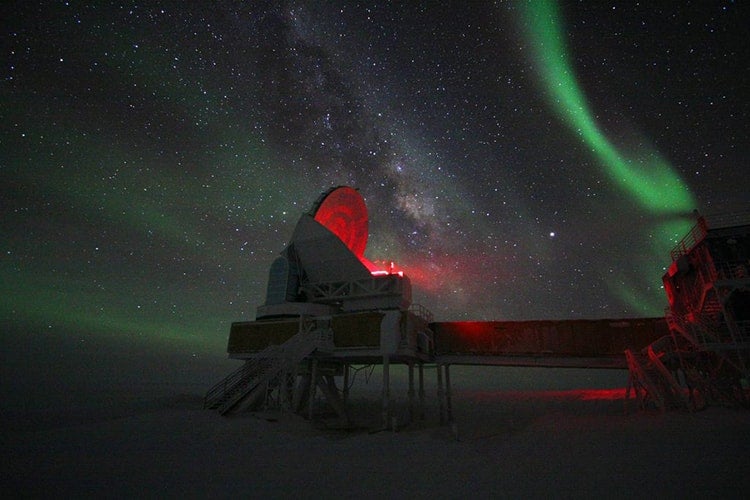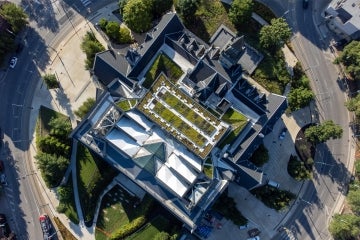U of T PhD student in astronomy heads to 'bottom of the world' to upgrade telescope

Published: March 27, 2018
When Matt Young was a kid growing up in Perth, Australia, his family would go on camping trips to the southern tip of Western Australia. There was a sign there, on the beach, saying “Next Stop: Antarctica.”
Little did he know that some 20 years later, as a University of Toronto graduate student, he’d be spending two months at the South Pole, helping upgrade the camera on a giant telescope that observes the Cosmic Microwave Background – light from the earliest days of the universe.
Last November, the third-year PhD student made the long trek from Toronto to the “bottom of the world” – the Amundsen-Scott South Pole Station – taking five flights over two weeks to get there. He had just a few weeks of the Antarctic summer – 24-hour sunlight and balmy temperatures of just -30ºC – to work with another graduate student, overhauling and upgrading the telescope’s camera.
The work involved disassembling the one-tonne instrument, replacing its three lenses with ones made with a new anti-reflective coating, and the high-stakes work of assembling and installing 10 new detector wafers, delicate sensors that focus and record the microwaves captured by the camera from the telescope’s 10-metre dish. One false move or dropped screw, and the entire wafer could be rendered useless.

The telescope at the Amundsen-Scott South Pole Station (photo by Keith Vanderlinde)
For Young, this was the reason he had pivoted from his undergraduate engineering degree to graduate work in astronomy.
“The work I’m doing here is exactly what I love – hands-on work with a huge variety of scientific equipment,” he says. “Most of the problems you come across are unique and often require novel solutions.”
The 15-hour days of painstaking labour didn’t faze him at all – they were exactly what he had eagerly signed up for.
“There’s a huge difference between looking at diagrams of the telescope in Toronto, and actually taking things apart myself,” Young says. “Being here puts everything together. The skills I’m learning here are invaluable. I doubt I could pick them up any other way than by being directly involved.”
That’s exactly why U of T's department of astronomy and astrophysics strives to give its graduate students as many opportunities as possible to travel to the world’s most important telescopes.
“Giving graduate students the opportunity to go into the field and make these measurements themselves completely changes the experience, from sitting at a desk and having someone email you a data set into a really fully interactive science experiment where you’re running the whole show,” says Assistant Professor Keith Vanderlinde of the Faculty of Arts & Science and U of T's Dunlap Institute for Astronomy & Astrophysics.
“It enriches their learning experience enormously. At the end of the day, it makes them better scientists.”
As the austral summer comes to an end, Young is on his way back to warmer climes, and his PhD research with Vanderlinde.
“Seeing as my passion is scientific instrumentation, the most valuable thing you can have is hands-on experience,” he says.
“Even with the long days, I’ve loved every second of it. It just helps confirm that this is what I want to be doing as a career.”



